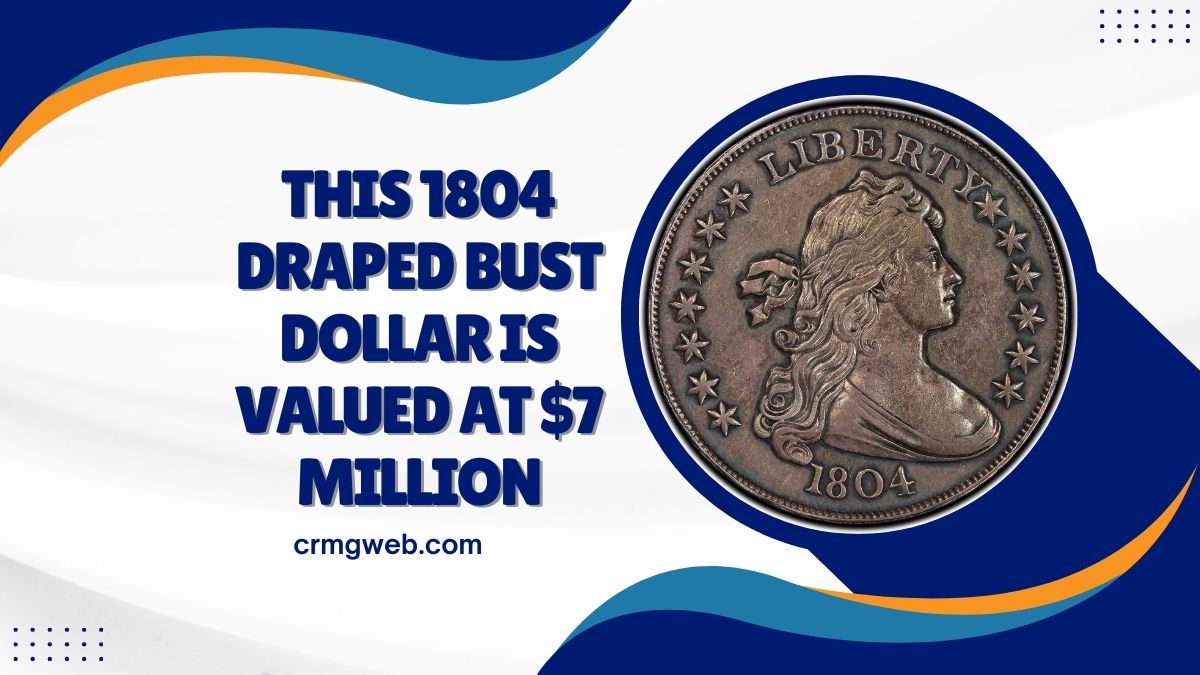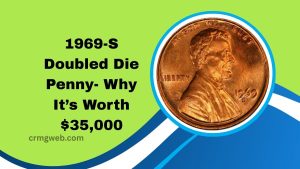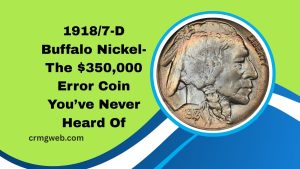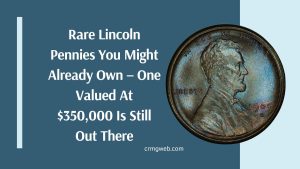The 1804 Draped Bust Dollar stands as a pinnacle in the realm of numismatics, often hailed as the “King of American Coins.”
Its storied past, extreme rarity, and the astronomical sums it commands at auctions have cemented its legendary status among collectors and historians alike.
Historical Background
Contrary to its date, no silver dollars bearing the 1804 inscription were minted in that year. The last recorded production of silver dollars before a decades-long hiatus occurred in March 1804, but these coins bore earlier dates, such as 1803, due to the Mint’s practice of using existing dies until they were no longer serviceable.
The genesis of the 1804-dated dollars traces back to 1834 when the U.S. Department of State commissioned special proof coin sets as diplomatic gifts for Asian dignitaries. Believing that the last silver dollars were struck in 1804, Mint officials produced new coins with that date for these presentation sets.
Design and Features
The Draped Bust Dollar showcases a refined portrayal of Liberty on the obverse, her hair elegantly draped, encircled by thirteen stars representing the original colonies, with the word “LIBERTY” inscribed above and the date “1804” below.
The reverse features a heraldic eagle clutching an olive branch and arrows, symbolizing peace and readiness for defense. Above the eagle, a scroll bears the motto “E PLURIBUS UNUM,” and the periphery is adorned with “UNITED STATES OF AMERICA.”
Classification of the 1804 Dollars
Numismatists categorize the 1804 Draped Bust Dollars into three distinct classes:
- Class I (Originals): Struck in 1834 for diplomatic purposes, eight specimens are known to exist. These coins feature a lettered edge and exhibit no rust pits on the reverse die.
- Class II (Restrikes): Produced clandestinely after 1857, only one specimen is known. This coin has a plain edge and was struck over an 1857 Swiss Shooting Thaler.
- Class III (Restrikes): Also minted surreptitiously post-1857, six specimens are documented. These coins have a lettered edge but can be distinguished from Class I by a rust pit near the top leaf of the olive branch on the reverse.
Notable Sales and Provenance
The 1804 Draped Bust Dollar has a rich auction history, with prices appreciating significantly over time:
- August 2021: A Class I specimen, believed to be the coin presented to the Sultan of Muscat, sold for $7.68 million, making it the second-highest price ever paid for a U.S. silver dollar.
- 1999: The same coin achieved a then-record price of $4.14 million at auction.
- 1980: A Class III example fetched $400,000, reflecting the coin’s escalating value.
Significant Sales of the 1804 Draped Bust Dollar
| Year | Class | Price Realized | Notable Details |
|---|---|---|---|
| 1980 | III | $400,000 | Reflects growing interest and value appreciation |
| 1999 | I | $4.14 million | Then-record price for any coin at auction |
| 2021 | I | $7.68 million | Second-highest price for a U.S. silver dollar |
Factors Contributing to High Valuation
Several elements underpin the extraordinary valuations of the 1804 Draped Bust Dollar:
- Extreme Rarity: With only fifteen known specimens across all classes, their scarcity drives intense competition among collectors.
- Historical Significance: Commissioned for diplomatic missions, these coins embody a unique narrative in U.S. history.
- Prestigious Provenance: Ownership by notable figures and inclusion in esteemed collections enhance desirability.
- Condition and Grade: Specimens in superior condition, such as those graded Proof-68, command premium prices due to their exceptional preservation.
The 1804 Draped Bust Dollar epitomizes the allure of numismatics, intertwining rarity, artistry, and historical intrigue. Its journey from a diplomatic gift to a multimillion-dollar treasure underscores its enduring legacy and the perpetual fascination it holds for collectors worldwide.
FAQs
Why were 1804 dollars minted decades after their date?
They were produced in 1834 for diplomatic gift sets, with officials mistakenly believing 1804 was the last year of silver dollar production.
How many 1804 Draped Bust Dollars exist today?
Fifteen specimens are known: eight Class I, one Class II, and six Class III.
What distinguishes Class I, II, and III 1804 dollars?
Class I coins were minted for diplomatic purposes with lettered edges; Class II were unauthorized restrikes with plain edges; Class III were also restrikes but have lettered edges and specific die characteristics.
Why is the 1804 Draped Bust Dollar so valuable?
Its combination of rarity, historical significance, and provenance contributes to its high valuation among collectors.




